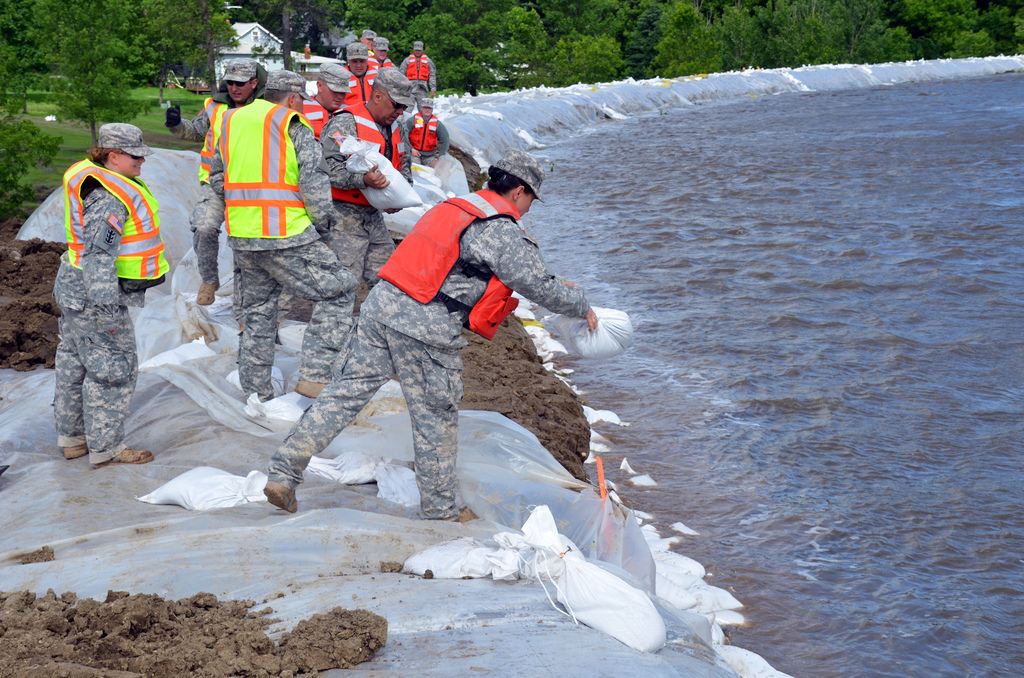New science examining future flood risks in the United States shows that it is often more cost-effective for communities to buy and protect floodplains than to let them be developed and pay for expensive flood damages. In many places, $1 invested in floodplain protection today can return at least $5 in savings from avoided flood damages in the future.
The Gist
Published in Nature Sustainability, the paper, by scientists from TNC, the University of Bristol (UK) and flood analytics company Fathom, examines the question: “What would cost American taxpayers more? Paying now to protect undeveloped areas that are likely to flood in the coming decades? Or, allowing development to proceed based on current projections and paying for subsequent flood damages when they inevitably occur?”
The short answer: across more than 104,000 square miles of 100-year floodplains (an area about the size of Colorado), floodplain protection could be an economically sound way to avoid future flood damages.
The Big Picture
To understand the potential for land protection to cost-effectively mitigate future flood damages, researchers compared the cost of buying and conserving undeveloped floodplains today relative to the benefits of avoiding flood damages to projected development in the future.
Their findings showed that the conservation strategy is more cost-effective overall and is particularly sound in areas exposed to relatively frequent flooding (i.e. areas with a 5 percent chance or greater of flooding each year, the so-called 20-year floodplain).
Oliver Wing, a flood risk scientist and researcher at the University of Bristol who co-authored the paper, noted that while the conservation of undeveloped, flood-prone areas would be broadly effective across the nation, it is likely to be particularly beneficial in the Southwest, the eastern Great Lakes, the Appalachians, and regions where population growth is anticipated in areas at risk of flooding.
The Takeaway
So far, 2019 has been the wettest year on record in the lower 48 U.S. states, and flooding has been particularly widespread and destructive. Flooding is among the most common and most costly of
natural disasters, with average flood losses in the U.S increasing steadily to nearly $10 billion annually. Population growth and climate change mean these impacts are likely to grow. Meanwhile, the American taxpayer-backed National Flood Insurance Program is in record debt at nearly $25 billion.
“Not only would investing now to conserve undeveloped lands in floodplains likely save tens of billions of dollars in avoided flood damages,” said Kris Johnson, who is TNC’s deputy director of agriculture for North America and who co-authored the paper, “protecting these lands would also provide a host of additional benefits for habitat, wildlife, water quality and recreation, further strengthening the economic rationale for floodplain conservation.”
References:
Johnson, K.A., Wing, O.E.J., Bates, P.D. et al. A benefit–cost analysis of floodplain land acquisition for US flood damage reduction. Nat Sustain (2019). DOI: https://doi.org/10.1038/s41893-019-0437-5
O.E.J. Wing, P.D. Bates, A.M. Smith, C.C. Sampson, K.A. Johnson, J. Fargione, P. Morefield, Estimates of present and future flood risk in the conterminous United States, Env Res Letters 13, 034023 (2018). DOI: https://doi.org/10.1088/1748-9326/aaac65




Join the Discussion